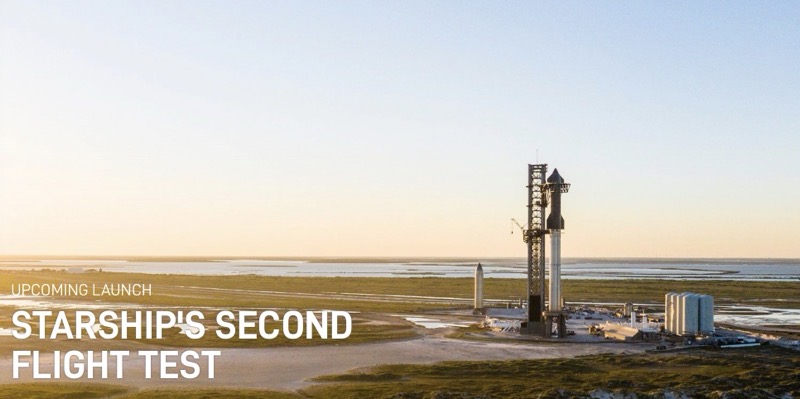
SpaceX Starship Set to Launch on Friday, Approval Incoming: Musk
SpaceX is ready for the second fully integrated flight test of its Starship, potentially launching as early as Friday, November 17, subject to receiving the final nod from regulatory authorities.
CEO Elon Musk said on Monday evening, “Was just informed that approval to launch should happen in time for a Friday launch.” This is pretty exciting news.
Was just informed that approval to launch should happen in time for a Friday launch https://t.co/NshoTHdqew
— Elon Musk (@elonmusk) November 14, 2023
Check out what you need to know about the second Starship flight test below:
Live Webcast of Starship Launch
- Broadcast Start: Approximately 30 minutes before liftoff.
- Where to Watch: Live stream accessible through SpaceX’s website and their X @SpaceX social media account.
Dynamic Schedule and Updates
- Developmental Testing: As with all prototype tests, the launch schedule remains flexible.
- Updates: SpaceX advises enthusiasts to follow their X social media account for real-time updates.
Key Enhancements in Second Flight Test
- Previous Flight Learnings: The initial test flight has informed several vehicle and infrastructure improvements.
- New Features: Introduction of a hot-stage separation system, upgraded electronic Thrust Vector Control (TVC) for Super Heavy Raptor engines, reinforced pad foundation, and a water-cooled steel flame deflector.
The countdown to SpaceX’s Starship’s second flight test is a series of meticulously planned events, starting two hours before liftoff. The process begins with the SpaceX Flight Director’s go-ahead for propellant loading. This is followed by the loading of both liquid oxygen (LOX) and liquid methane into the booster, and subsequently into the ship. As the countdown continues, critical preparatory steps like engine chilling and flame deflector activation are undertaken, leading up to the exciting moment of liftoff. SpaceX says at the 00:00:00 part of the countdown “excitement guaranteed”.
The flight test itself follows a detailed timeline, beginning with liftoff and proceeding through key milestones. These include the Max Q moment of peak mechanical stress, the cutting off of most booster engines (MECO), and the crucial hot-staging process involving the ignition of Starship Raptor engines and stage separation. The booster then undergoes a boostback burn, followed by a landing burn, culminating in its landing.
Meanwhile, Starship continues its journey, eventually cutting off its engines, re-entering the atmosphere, and aiming for a thrilling landing. Each of these stages is critical to the mission’s success, demonstrating the complex choreography of spaceflight.
SpaceX’s approach to rapid, iterative development has been pivotal in its series of breakthroughs, including the Falcon, Dragon, and Starlink projects. This methodology is crucial in their ongoing efforts to develop a fully reusable transport system, aiming to revolutionize space travel for crew and cargo to Earth orbit, missions to the Moon, and eventual journeys to Mars and beyond.


